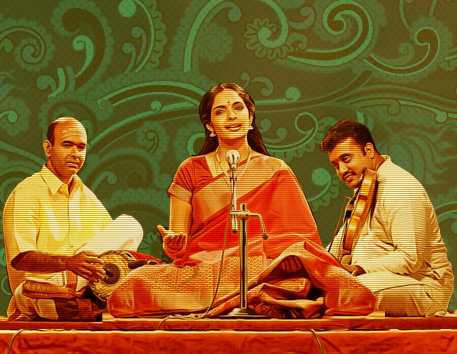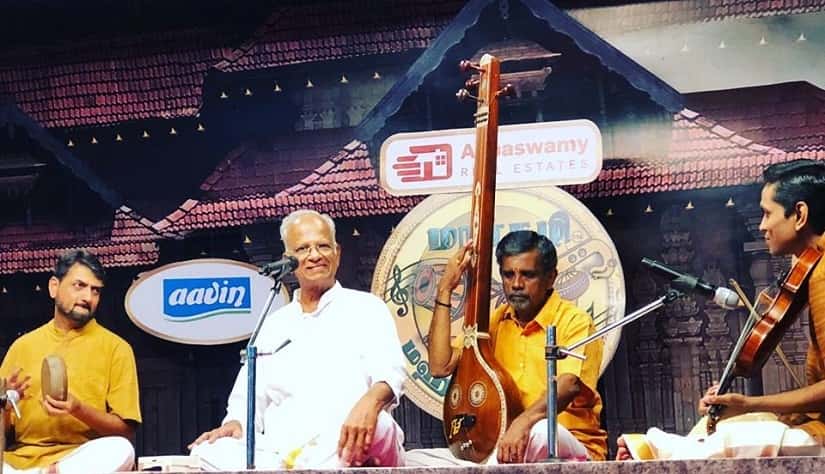
Margazhi festival: 5 controversies in history of Carnatic music, Bharatanatyam
The classical art forms have been at the centre of allegations of Brahminical dominance and discrimination for long. The Federal traces five flash points in their history

Tamil Nadu’s rich tradition of Carnatic music and Bharatanatyam has churned out thousands of musicians and dance artists. But the music and dance scene has never been short of controversies.
The Margazhi music season in Chennai, which falls roughly between mid-December and mid-January, has always had its share of controversies, too. The Federal traces five big controversies down the centuries.
1. Sadir, “sex slavery” and present-day Bharatanatyam
The Chola kings patronised a dance form named Sadir which peaked during 9th-12th century AD. Rock inscriptions of Raja Raja Chola allotting 400 homes for Devadasis have been decrypted. Women — often teenaged girls who just hit puberty — would be “married off” to a temple deity. The sole purpose of their life was to finetune Sadir and perform in royal courts and temples.
Women could not marry any human since they were already “wedded” to the god. While it was debated whether it was an art form or feudal slavery, their situation went from bad to worse with British colonisation. Without royal patronage, many Devadasis were forced into prostitution.
Muthulakshmi Reddy, India’s first woman legislative member from then Madras Presidency, initiated the mission in the 1920s to abolish the Devadasi system. A few legislative members wanted to safeguard the dance art form when it was taken up for debate in the assembly. But Muthulakshmi was blunt: “Then send women from your family.”
Also read: Chennai’s Marghazi music fest is back, but sabhas struggle with poor ticket sales
Sadir, practised by Devadasis, largely represented women from different castes. Scholars consider it a precursor to modern-day Bharatanatyam. By 1932, Sadir was renamed Bharatanatyam, recounts Avanthi Meduri in her research paper published in the Asian Theatre Journal, titled “Bharatanatyam: What Are You.” Even before the Constitution was framed, the Devadasi Abolition Act, 1947, was promulgated.
2. Music Academy and allegations of elitism
Even as Muthulakshmi Reddy was fighting for abolishing Devadasi system, a section of the intelligentsia was worried over the loss of the dance form. By 1927, an All India Music Congress was held in Chennai on the sidelines of the All India Congress session. A resolution to form the Madras Music Academy was passed to promote the classical art. The signatories were from different communities.
The Academy initially had its office in the dispensary of U Rama Rao on Thambu Chetty Street (currently Thambu Street) before the present-day office on TTK Road was opened in 1955. From the 1928, the Academy started organising the Music Season every year. Initially conducted in March or April, it was changed into the December Margazhi month festival.
The founders of the Academy had a varied representation of the society, including a person from the Thevar community, not usually associated with the classical art form. But the present day committee is found to be elitist. What began in Chennai by 1927 could have been taken to the nook and corner of the state, especially since the Music Academy is considered to be the Mecca of Carnatic music.
“The Music trio (Tyagaraja, Muthuswami Dikshitar and Syama Sastri) or the Thanjavur Quartet (Chinnayya, Ponnayya, Sivanandam and Vadivelu) didn’t compose music for a few. It’s a composition for the entire World. We should carry their ideals and take classical music to the general public,” said P Venugopal, a patron-member of the Music Academy, speaking to The Federal.
Royal patronage in the past and corporate support in the present day are considered a lifeline for any art form. But corporate intervention or influence isn’t a healthy sign.
3. Controversy around Nehru-MS Subbulakshmi meet
The Madras Music Academy’s present premises on TTK Road was inaugurated in 1955 by Prime Minister Jawaharlal Nehru. As part of the itinerary, he had an exclusive meeting with legendary Carnatic vocalist MS Subbulakshmi, who hailed from a Devadasi background. This irked some of the senior artists of the time.
Ariyakkudi Ramanuja Iyengar, a vocalist par excellence, felt insulted over the “importance” given to MS Subbulakshmi. For nearly five years, he never took part in music performances in the Music Academy as a sign of protest.
4. Rukmini Devi Arundale’s reformation of the dance form
Modern day “secular” Bharatanatyam owes a lot to Rukmini Devi Arundale. Even though controversial, her Theosophical Society influence helped move the dance form away from the identity of temples and royal courts of the past to formal dance schools. She established Kalakshetra in 1936, a dance school of prominence till date.
Hailing from a Brahmin background, she learnt the dance and taught along with many legends, some of them from the Devadasi background. But the classical dance form was further entrenched into a Brahminical identity as Devadasi Sadir dancers, who hailed from different castes, dwindled.

Apart from the revival of the dance form, there was a reformation, too. The modern-day version of the dance is more universal. The reformation by Rukmini Devi ensured Bharatanatyam schools could be set up anywhere — from tiny towns in Tamil Nadu to New Jersey in the US, though it was contested by purists then.
5. Allegations of Brahminical domination and discrimination
Eminent Carnatic vocalist TM Krishna has been boycotting any performance in the December Margazhi music season, alleging discrimination, since 2015. Many music sabhas were largely controlled by Brahmins (Iyers and Iyengars) but the performers represent various segments of the society, said P Venugopal, a patron-member of the Music Academy, speaking to The Federal. “There are widespread allegations of discrimination in awarding prize winners in the December music season. But it is a subjective issue,” he said.
A Bharatanatyam exponent hailing from a non-Brahmin background voiced a similar concern on condition of anonymity. “I was inspired by the dance, watching others perform while my mother was working as a maid at a dance school. I joined Bharatanatyam as a kid and my gurus never discriminated against shishyas. I was the only non-Brahmin dancer of the school at one point of time. If I was given the lead role in a performance, the parents of other performers would complain: ‘How could the daughter of a person doing a menial job be given a lead role?’” she told The Federal. She is now a Bharatanatyam teacher at a reputed dance school.
Post-pandemic, the classical art form is going through many hindrances. Youngsters have lost a whole lot of seniors to Covid who could have inspired and guided them. Carnatic music will take at least five more years to recover from the Covid impact, said Venugopal. “Already seniors who are connoisseurs of Carnatic music avoid attending music festivals, leading to less attendees at the sabhas,” he said.


